How do optical signals transmit information?
An optical network is usually referred to as an optical communication network, and its transmission medium is an optical fiber.
When you speak to the mobile phone or take pictures or videos, the sound, pictures, or videos become electric current, a series of digital signals composed of “0 or “1” through the electrical signal transmission device. Then the signals transmit solid or weak light through the optical transmitter to another optical receiver through the optical fiber. The receiving end there restores it into a sound or image signal, so people in the distance can hear the sound and see the image. This is how fiber-optic communication works.
Optical fiber communication speeds up the transmission of information and enables the information to go on the highway. The capacity of optical fiber communication is astonishingly large. On an optical fiber thinner than a human hair, tens of thousands of telephone calls or thousands of TV programs can be transmitted simultaneously. Optical fiber communication also boasts good confidentiality and strong anti-interference ability, so it is widely used.
Optical network technology refers to the network structure technology using optical fiber transmission. Optical network technology is not only a simple optical fiber transmission link, but a technology based on the large-capacity, long-distance, high-reliability transmission medium provided by optical fiber, using optical and electronic control technology to achieve interconnection and flexible scheduling of multi-node networks.
An optical network generally refers to a wide area network, a metropolitan area network, or a newly built large-scale local area network that uses optical fibers as the main transmission medium.
The core component of an optical network: optical module is an optical device used for photoelectric conversion and electro-optical conversion, which consists of the optical device, functional circuit, and optical interface. Optical devices include transmitting and receiving parts, where the transmitting end converts electrical signals into optical signals, and after transmission through optical fiber, the receiving end then converts optical signals into electrical signals, so optical modules are also known as optical transceivers. Although the optical module is small in size and relatively simple in construction, it has high technical requirements.
With the accelerated growth of Internet traffic in recent years, optical modules play an important role in long-distance communication, data center and 5G applications, and fiber to the home. There are the following common form factors: SFP, SFP+, SFP28, QSFP+, QSFP28, QSFP56, and QSFP-DD, with rates of 100M, 1.25G, 10G, 25G, 40G, 100G, 200G, and 400G, respectively.
It is mainly applied in the Ethernet, fiber channel, OTN, InfiniBand, SDH, and SONET. It can also be used in fiber converters, switches, fiber-optic routers, fiber-optic network cards, communication base stations, and other equipment. The transmission rate, transmission distance, and application range vary according to form factors.
Related Products:
-
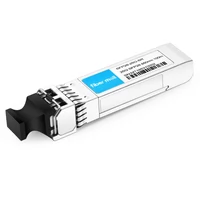 Cisco SFP-25G-SR-S Compatible 25G SFP28 SR 850nm 100m LC MMF DDM Transceiver Module
$25.00
Cisco SFP-25G-SR-S Compatible 25G SFP28 SR 850nm 100m LC MMF DDM Transceiver Module
$25.00
-
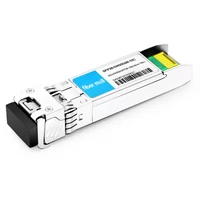 Cisco DWDM-SFP25G-56.55 Compatible 25G DWDM SFP28 C26 100GHz 1556.55nm 10km LC SMF DDM Transceiver Module
$300.00
Cisco DWDM-SFP25G-56.55 Compatible 25G DWDM SFP28 C26 100GHz 1556.55nm 10km LC SMF DDM Transceiver Module
$300.00
-
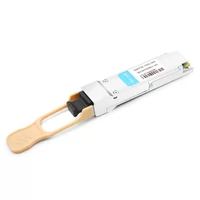 Cisco QSFP-100G-SR4-S Compatible 100G QSFP28 SR4 850nm 100m MTP/MPO MMF DDM Transceiver Module
$40.00
Cisco QSFP-100G-SR4-S Compatible 100G QSFP28 SR4 850nm 100m MTP/MPO MMF DDM Transceiver Module
$40.00
-
 Cisco QSFP-100G-CWDM4-S Compatible 100G QSFP28 CWDM4 1310nm 2km LC SMF DDM Transceiver Module
$110.00
Cisco QSFP-100G-CWDM4-S Compatible 100G QSFP28 CWDM4 1310nm 2km LC SMF DDM Transceiver Module
$110.00
-
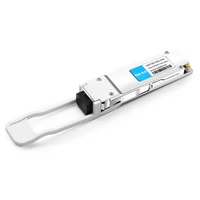 Cisco QSFP-100G-ZR4-S Compatible 100G QSFP28 ZR4 1296-1309nm LWDM 80km LC SMF DDM Transceiver Module
$1500.00
Cisco QSFP-100G-ZR4-S Compatible 100G QSFP28 ZR4 1296-1309nm LWDM 80km LC SMF DDM Transceiver Module
$1500.00
-
 Mellanox MMA1T00-VS Compatible 200G Ethernet QSFP56 SR4 PAM4 850nm 100m MTP/MPO APC OM3 FEC Optical Transceiver Module
$200.00
Mellanox MMA1T00-VS Compatible 200G Ethernet QSFP56 SR4 PAM4 850nm 100m MTP/MPO APC OM3 FEC Optical Transceiver Module
$200.00
-
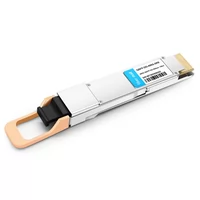 Arista Networks QDD-400G-SR8 Compatible 400G QSFP-DD SR8 PAM4 850nm 100m MTP/MPO OM3 FEC Optical Transceiver Module
$180.00
Arista Networks QDD-400G-SR8 Compatible 400G QSFP-DD SR8 PAM4 850nm 100m MTP/MPO OM3 FEC Optical Transceiver Module
$180.00
-
 Cisco CFP2-WDM-D-1HL Compatible 200G Coherent CFP2-DCO C-band Tunable Optical Transceiver Module
$7000.00
Cisco CFP2-WDM-D-1HL Compatible 200G Coherent CFP2-DCO C-band Tunable Optical Transceiver Module
$7000.00
